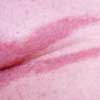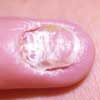- CDC
- Heart Failure
- Cardiovascular Clinical Consult
- Adult Immunization
- Hepatic Disease
- Rare Disorders
- Pediatric Immunization
- Implementing The Topcon Ocular Telehealth Platform
- Weight Management
- Monkeypox
- Guidelines
- Men's Health
- Psychiatry
- Allergy
- Nutrition
- Women's Health
- Cardiology
- Substance Use
- Pediatrics
- Kidney Disease
- Genetics
- Complimentary & Alternative Medicine
- Dermatology
- Endocrinology
- Oral Medicine
- Otorhinolaryngologic Diseases
- Pain
- Gastrointestinal Disorders
- Geriatrics
- Infection
- Musculoskeletal Disorders
- Obesity
- Rheumatology
- Technology
- Cancer
- Nephrology
- Anemia
- Neurology
- Pulmonology
Stasis Dermatitis and Contact Dermatitis
vvd

Case 1:
A 76-year-old woman has had bilateral lower leg pain, erythema, and edema for 2 days. The symptoms began after she attended a football game during which she sat outside all afternoon in the cool weather. She has diet-controlled diabetes and has taken the same antihypertensive for the past year. She has no history of circulatory problems, fever, or dyspnea.
What is the most likely diagnosis?
A
. Stasis dermatitis.
B
. Cellulitis.
C
. Livedo reticularis.
D
. Venous thrombosis.
E
. Photoallergic reaction.
(Answer on next page.)

Case 1: The patient had marked pedal edema consistent with acute venous stasis dermatitis, A. It was precipitated by sitting outside for a long period in addition to sitting in the car on the way to and from the game. The condition improved with an increase in the dosage of her diuretic and the use of support hose.
Neither cellulitis nor venous thrombosis would affect both legs. Livedo reticularis manifests with a netlike or mottled pattern. A photoallergic reaction can occur in patients taking antihypertensives, but it would normally erupt on sun- exposed surfaces. This patient's legs had been covered.

Case 2:
For the past week, a 72-year-old man has had an asymptomatic eruption in the left inguinal region. He has not worn any new clothing or used any new soaps or fabric softeners. He has taken the same lipid-lowering agent and aspirin product for years.
Your initial approach is to . . .
A.
Perform a potassium hydroxide evaluation.
B.
Perform a biopsy.
C.
Perform a bacterial culture.
D.
Recommend an over-the-counter antifungal powder.
E.
Prescribe an antibiotic ointment.
(Answer on next page.)

Case 2: The linear pattern of the rash suggested contact dermatitis, but the history did not support this diagnosis, so a biopsy, B, was warranted. Despite the almost purpuric appearance of the eruption, the biopsy specimen exhibited changes consistent with contact dermatitis. The rash resolved with a short course of a corticosteroid cream; there were no recurrences.
This was an atypical presentation of contact dermatitis, which is usually associated with pruritus and scaling. The other entities in the differential diagnosis of an inguinal rash--intertrigo, candidiasis, tinea cruris, and erythrasma--are also characterized by pruritus and scaling.

Case 3:
A 16-year-old girl presents with a chronic infection of one fingernail that has not responded to a trial of cephalexin. The patient was advised to undergo inpatient intravenous antibiotic treatment for probable methicillin-resistant Staphylococcus aureus (MRSA) infection. She is seeking a second opinion.
What is your clinical impression?
A.
MRSA infection.
B.
Gram-negative infection.
C.
Candidal infection.
D.
Psoriasis.
E.
Factitial condition.
What is the appropriate course of action?
F.
Admit the patient for intravenous vancomycin therapy for presumed MRSA infection.
G.
Prescribe oral trimethoprim/sulfamethoxazole to cover for MRSA.
H.
Recommend an orthopedic consultation for debridement.
I.
Prescribe topical mupirocin.
J.
Prescribe oral fluconazole.
(Answer on next page.)

Case 3: Chronic paronychia is a candidal infection, C, until proved otherwise. MRSA and Gram-negative infections are more acute and more painful; the patient presents long before nail changes associated with these infections typically occur. Psoriasis is characterized by nail pitting. Factitial conditions manifest with more evidence of trauma to the proximal nail fold.
The patient responded to oral fluconazole, J. Evidence suggests that topical corticosteroids are equally effective.1

Case 4:
This asymptomatic acneiform outbreak erupted on the upper chest of a 24-year-old woman after she was hospitalized for an asthma exacerbation. Her medications include a nonsedating antihistamine, an oral leukotriene inhibitor, and a nonsteroidal inhaled bronchodilator.
What does this look like to you?
A.
Adverse drug reaction.
B.
Steroid-induced folliculitis.
C.
Stress-induced acne from hospitalization.
D.
Staphylococcal folliculitis.
E.
Pityrosporum
folliculitis.
(Answer on next page.)

Case 4: The patient has steroid- induced folliculitis, B, attributable to high doses of corticosteroids that she received in the hospital. These outbreaks are abrupt and usually monomorphous. Discontinuation of the corticosteroids results in a slow resolution of the eruption.
Adverse drug reactions are usually symptomatic and more widespread. Acne can flare as a result of stress in a patient with a history of acne, but this patient had no such history. Staphylococcal infections are usually tender, and Pityrosporum folliculitis is generally pruritic.
References:
REFERENCE:
1. Tosti A, Piraccini BM, Ghetti E, Colombo MD. Topical steroids versus systemic antifungals in the treatment of chronic paronychia: an open, randomized double-blind and double dummy study. J Am Acad Dermatol. 2002; 47:73-76.
